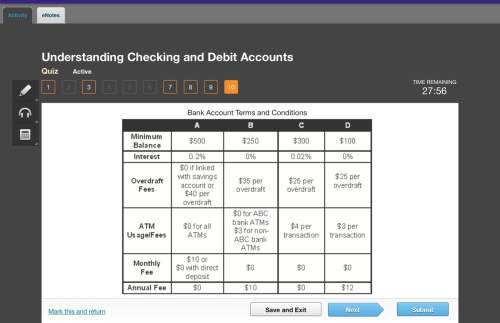
Assume that an investor purchases 100% of an investee company for $32 million in a transaction that qualifies as a business combination. The fair values of the identifiable net assets are as follows:
Tangible net assets: Receivables, inventories, PPE, payables, and accruals $10 million
Intangible assets: Patents, customer lists, trade name, software, etc. 7 million
Research and development assets: Research projects in process at the investee company 8 million
In addition to the purchase price, the investor also incurs acquisition-related costs amounting to $1.8 million for professional fees and the internal allocation of overhead relating to the purchase.
a. How much of the purchase price is assigned to Goodwill?
b. How do we account for Goodwill subsequent to the acquisition?
c. Given the accounting treatment for Goodwill subsequent to the acquisition, why might companies be motivated to increase the amount assigned to goodwill?

Answers: 1
Another question on Business

Business, 21.06.2019 18:30
What is product differentiation, and how can it be achieved ? what is product positioning? what conditions would head to head product positioning be appropriate?
Answers: 2

Business, 22.06.2019 00:40
Guardian inc. is trying to develop an asset-financing plan. the firm has $450,000 in temporary current assets and $350,000 in permanent current assets. guardian also has $550,000 in fixed assets. assume a tax rate of 40 percent. a. construct two alternative financing plans for guardian. one of the plans should be conservative, with 70 percent of assets financed by long-term sources, and the other should be aggressive, with only 56.25 percent of assets financed by long-term sources. the current interest rate is 12 percent on long-term funds and 7 percent on short-term financing. compute the annual interest payments under each plan.
Answers: 3

Business, 22.06.2019 02:00
Kenney co. uses process costing to account for the production of canned energy drinks. direct materials are added at the beginning of the process and conversion costs are incurred uniformly throughout the process. equivalent units have been calculated to be 19,200 units for materials and 16,000 units for conversion costs. beginning inventory consisted of $11,200 in materials and $6,400 in conversion costs. april costs were $57,600 for materials and $64,000 for conversion costs. ending inventory still in process was 6,400 units (100% complete for materials, 50% for conversion). the total cost per unit using the weighted average method would be closest to:
Answers: 2

Business, 22.06.2019 19:00
It is estimated that over 100,000 students will apply to the top 30 m.b.a. programs in the united states this year. a. using the concept of net present value and opportunity cost, when is it rational for an individual to pursue an m.b.a. degree. b. what would you expect to happen to the number of applicants if the starting salaries of managers with m.b.a. degrees remained constant but salaries of managers without such degrees decreased by 20 percent
Answers: 3
You know the right answer?
Assume that an investor purchases 100% of an investee company for $32 million in a transaction that...
Questions

Computers and Technology, 24.03.2020 03:33


Mathematics, 24.03.2020 03:33

Mathematics, 24.03.2020 03:33


History, 24.03.2020 03:33


Mathematics, 24.03.2020 03:33










Mathematics, 24.03.2020 03:34






